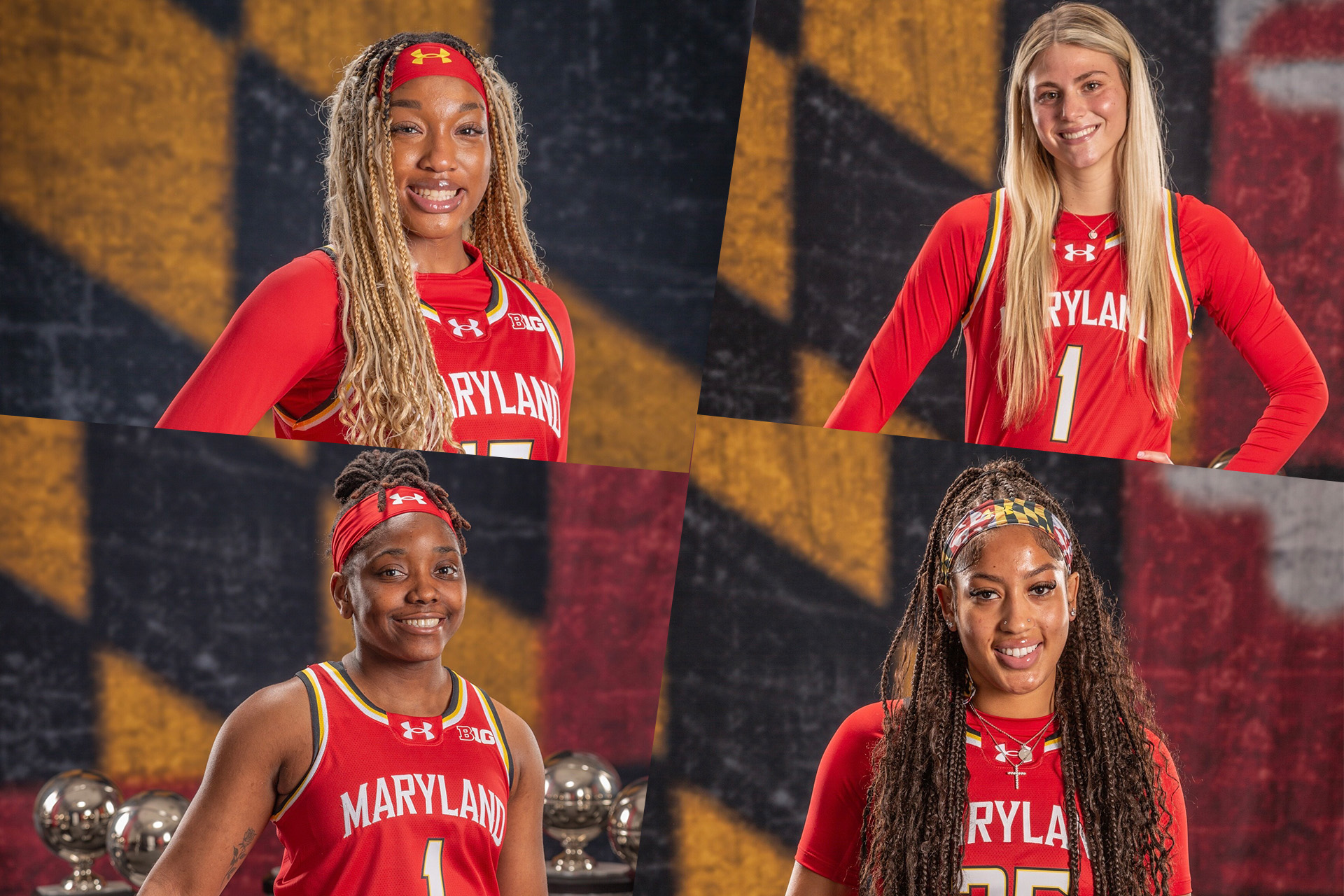Brenda Frese sat in a Palo Alto media room after Maryland women’s basketball’s first round loss to Iowa State. The blue March Madness backdrop shined behind her, exemplifying her team’s late-season resurgence that led it to the NCAA tournament.
But instead of celebrating a win, Frese was peppered with questions about her team’s shortcomings. Iowa State’s Audi Crooks, who scored 40 points, was the headliner among a litter of forwards who dominated the Terps in March.
When asked if there was anything Maryland could have done differently to slow down Crooks, Frese chuckled.
“I think if we had the personnel, I think we could have,” Frese said.
More than a month later, Frese held her first news conference since the loss. Her message was once again pointed.
“Bringing in much-needed depth and size was a priority for us,” she said.
[Virginia transfer Mir McLean commits to Maryland women’s basketball]
The Terps’ whirlwind offseason saw Frese add six transfers. Three are at least 6-foot-2. After losing Faith Masonius, Hawa Doumbouya, Riley Nelson and Summer Bostock to the portal, the Terps restocked with size and veteran talent.
Frese said her coaching staff has been working nearly 16-hour days since the loss to Iowa State. Their work has paid off — Maryland seems poised to compete in a challenging Big Ten conference with its new players.
Kaylene Smikle
When Smikle entered the transfer portal, Frese reached out immediately. She thought Maryland had a good chance of landing the Rutgers guard.
But when Smikle called Frese with a particular tone, layering their conversation with ambiguous phrases, Frese expected the worst.
“I really, at the time, thought we were going to get dropped, and then she let me know she was [committing],” Frese said. “I didn’t appreciate that one.”
Smikle was Maryland’s first addition. She could be the most talented.
The Rutgers transfer averaged more than 15 points a game in her two seasons at Rutgers. She scored 21 and 29 points, respectively, in her two games against Maryland as a freshman.
Shyanne Sellers, Bri McDaniel and Smikle are all versatile players. The three can bounce between different positions on the perimeter and play on or off the ball.
After a year where Maryland’s depth was decimated, Frese eagerly anticipates the different lineup combinations.
“We can slide them in different directions,” Frese said. “From my end, it’s a good problem to have.”
Saylor Poffenbarger
The Maryland coaches got a different surprise when Poffenbarger committed. Poffenbarger popped into a staff meeting unknowingly, announcing she was “coming home.”
Poffenbarger’s entire family was in College Park when she committed, symbolizing her ties to the area. The Terps have success recruiting hometown transfers — Abby Meyers became a WNBA first round draft pick in 2023 after transferring from Princeton.
The Arkansas transfer will likely start at a forward position for the Terps. She grabbed the second most defensive rebounds a game in the NCAA this season.
[UConn forward Amari DeBerry transfers to Maryland women’s basketball]
Poffenbarger’s defensive versatility and shot-blocking prowess will elevate a Terps defense that struggled in the post. Their zone defense often relied on a shorter Brinae Alexander in the middle.
Maryland will not sacrifice floor spacing with Poffenbarger on the floor, either. She connected on 1.8 threes a game at a 32.9 percent clip this past season.
Sarah Te-Biasu
It was obvious how much Maryland lacked a true point guard this season. Frese tried to land one last offseason but never closed the deal.
She found one this year. VCU transfer Te-Biasu, the Atlantic 10 Player of the Year last season, will slide seamlessly into the Terps’ lineup.
Te-Biasu is an aggressive shot taker. She attempted 13.6 a game in the 2023-24 season. The senior has been a consistent three point shooter her whole career, and despite standing just 5-foot-5, Frese isn’t worried about her size.
“If you can play, you can play,” Frese said.
Te-Biasu turned the ball over 2.2 times a game this season. She also averaged just 2.9 assists and sported a 1.3 assist-to-turnover ratio.
Elisa Pinzan, Maryland’s last transfer point guard addition, averaged 5.3 assists a game and assisted on 34.3 percent of her teammates’ baskets in her last year at South Florida.
Te-Biasu’s passing numbers could increase alongside more talented players. She will also take the load off of Sellers and McDaniel, who will slide into an off-ball role more frequently.
Christina Dalce
Dalce, another excellent rebounder, corralled 9.4 boards per game last season. Her offensive rebounding in particular will be a huge asset for Maryland.
The Big East Co-Defensive Player of the Year grabbed 4.7 offensive rebounds a game this past season with an 18.5 offensive rebounding rate. Masonius and Allie Kubek grabbed less than 10 percent of the Terps’ misses the same season.
The New Jersey native can play both the four and the five in Maryland’s rotation, giving Frese another experienced option in the frontcourt.
“We knew we needed size and rebounding, and then it becomes what’s available in the portal,” Frese said. “There were a lot more players in that forward post position this offseason that we were able to go after.”



